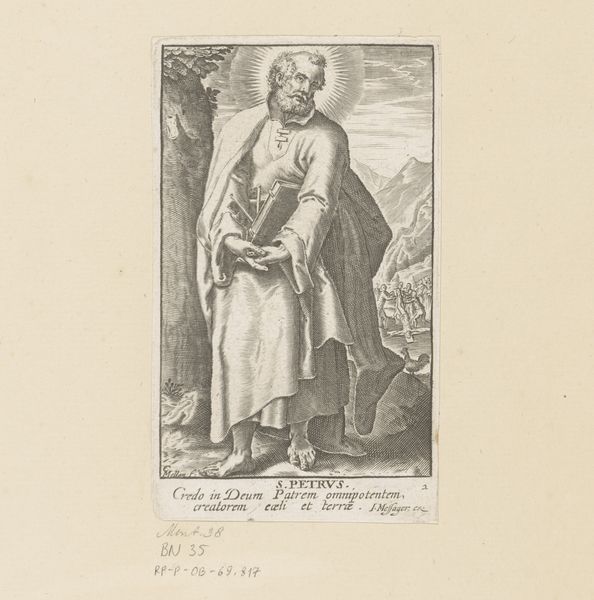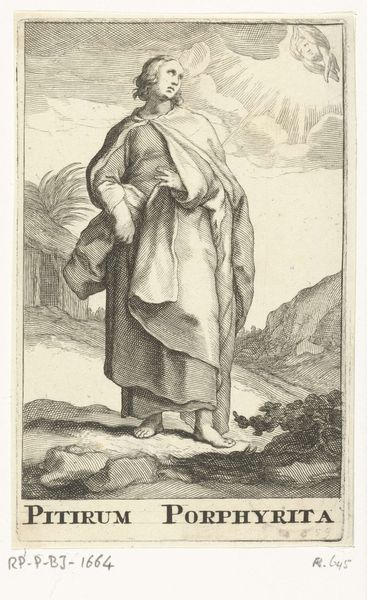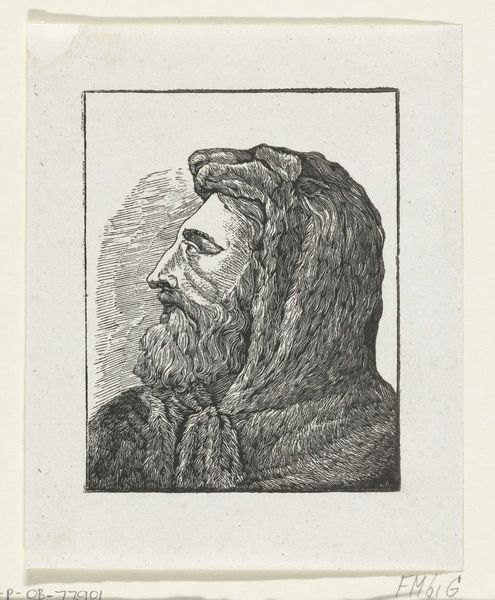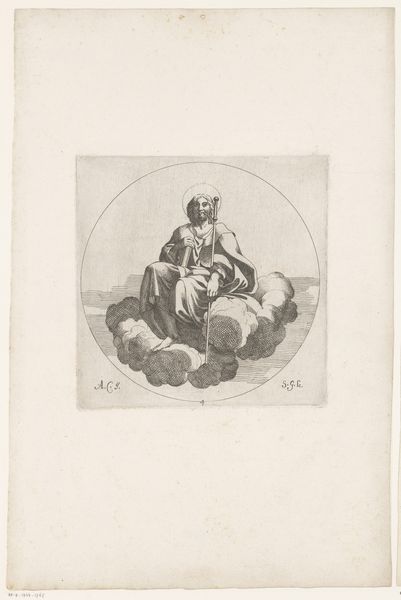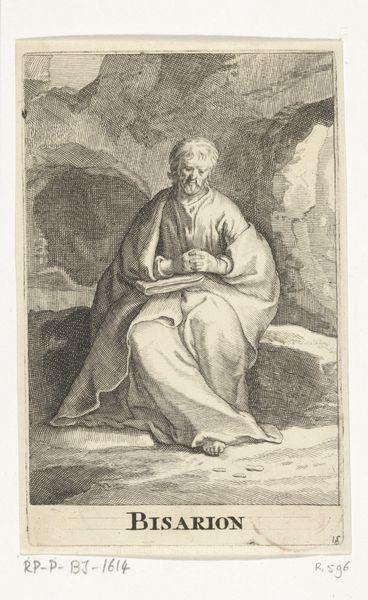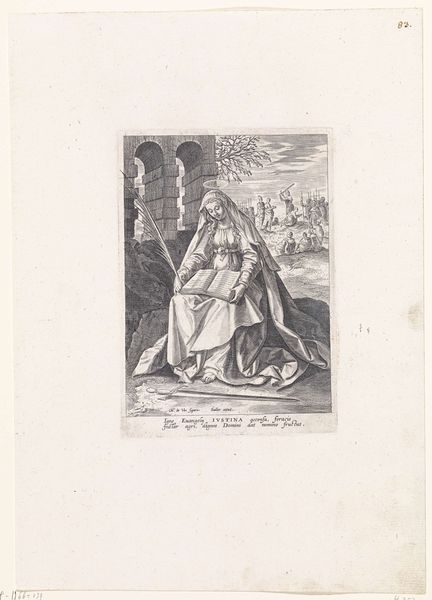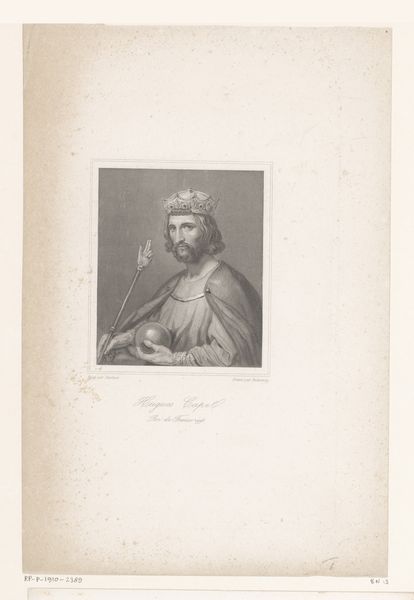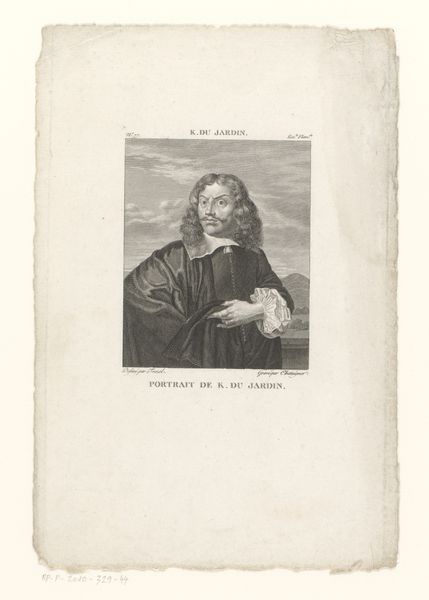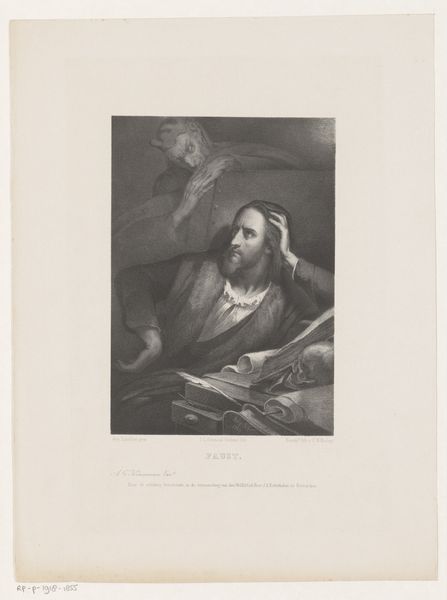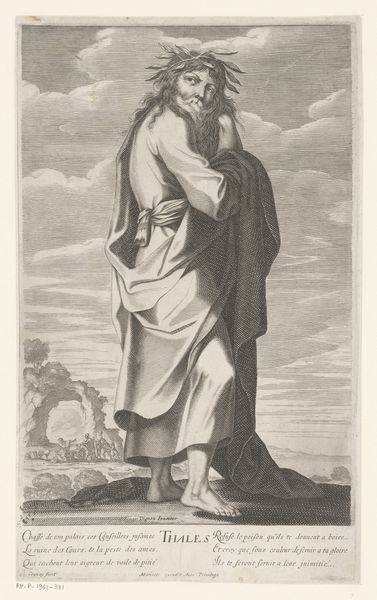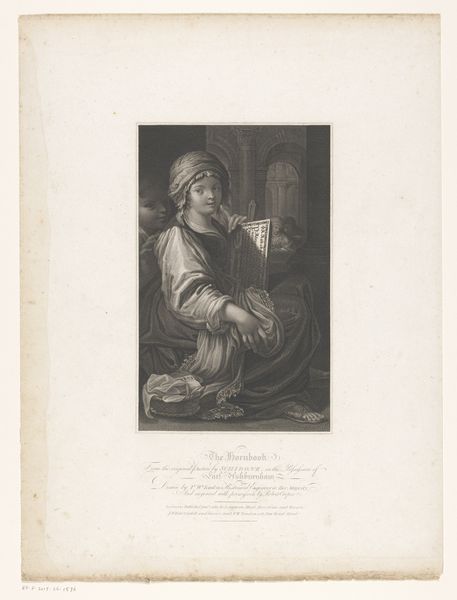
Dimensions: height 188 mm, width 126 mm
Copyright: Rijks Museum: Open Domain
Curator: Look at this evocative engraving, “Schrijvende Arabier,” or “Writing Arab,” from sometime between 1826 and 1886, held here at the Rijksmuseum, crafted by Dirk Jurriaan Sluyter. It immediately evokes a feeling of pensive solitude for me. Editor: Yes, the stark monochrome of the print lends it an almost melancholy air. But I’m more drawn to the texture and the visible labor. Notice the fineness of the engraving? You can almost feel the ridges, the deliberate lines the artist carved. That printing plate holds the history of its making. Curator: The ruins in the background certainly contribute to that somber mood, they represent a vanished era, while the seated figure symbolizes cultural persistence. It's the Orient as both lost and present, a common Romantic theme. Editor: Indeed. The "Orient" as a construct is crucial here. Think about the materials too: the paper, the ink, each carrying its own history of production and trade. How did Sluyter access these materials and why did he use them in this way to portray the "Arab"? The act of writing depicted takes on greater complexity when you start considering the labor behind its image production. Curator: Fascinating. For me, that scroll embodies so much: knowledge, history, tradition. But I also see how this representation contributes to the Orientalist trope of the wise scribe, reinforcing a certain image for a Western audience. Editor: Absolutely, that imagined and marketable "Orient". Consider too how the print as a medium allows for dissemination and replication, thus solidifying specific representations of an entire culture based on the original image. Curator: A powerful point about cultural consumption. Ultimately, it’s a piece about bridging worlds—both real and imagined—using potent symbols that still resonate today. Editor: And, indeed, through the traces of materials, and labour, allowing its history of creation and subsequent cultural meaning to further inform it.
Comments
No comments
Be the first to comment and join the conversation on the ultimate creative platform.
